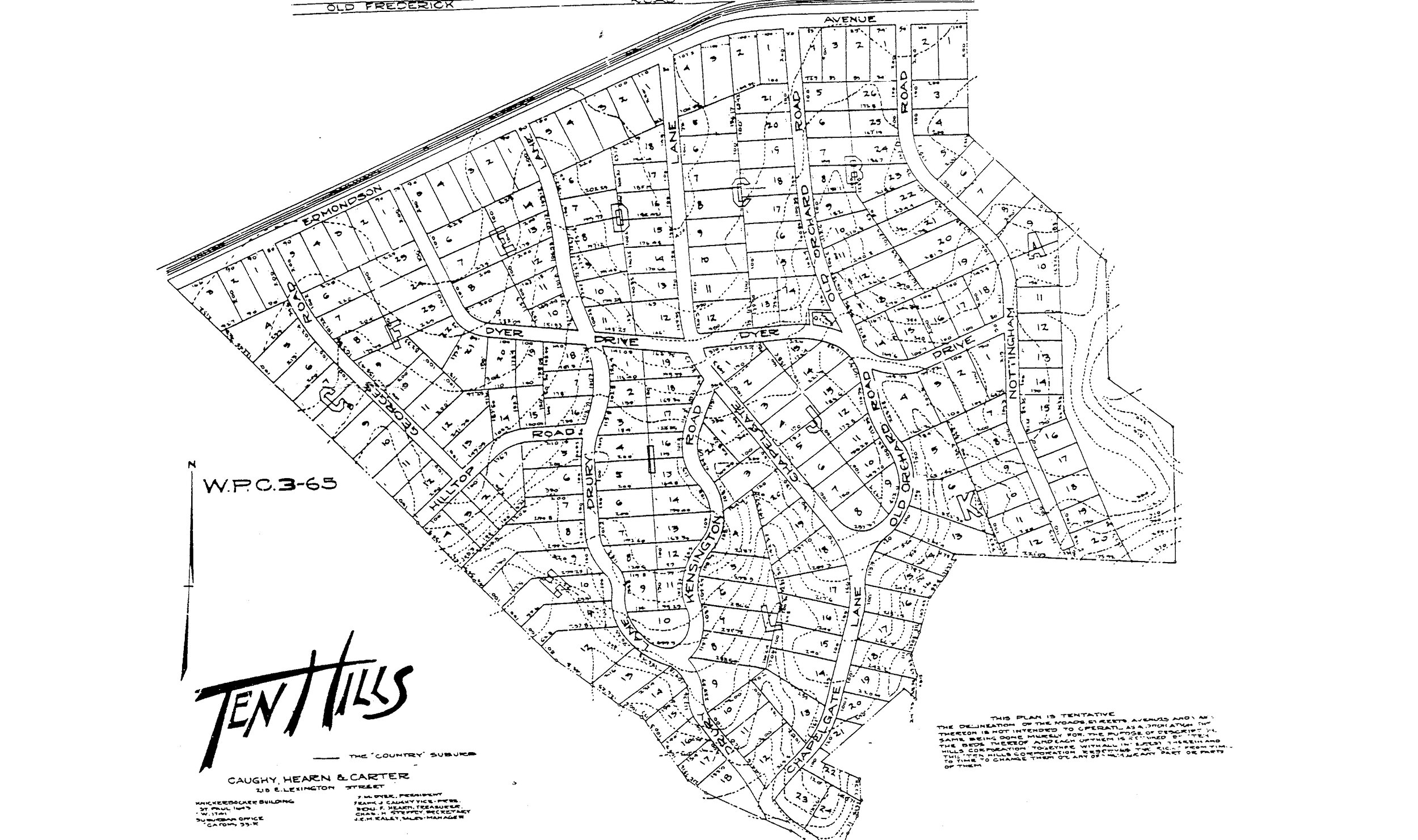
Establishment
In 1909, Charles Steffey, a realtor and developer, purchased the land that would become Ten Hills. The land had previously been part of the Chapel family estate. This was an era that saw the dissolution of many large “country” or “summer” estates, due in part to the growing popularity of the automobile. On November 23, 1909, Charles Steffey formed the Ten Hills Corporation and established the Ten Hills-The Country Suburb.
The Ten Hills Corporation began building the roads, water, sewer, electric, and telephone line infrastructure for the subdivision in March 1910. It began building cottages in the summer of 1910. The first home built was for none other than Charles Steffey himself (and still stands today). Between 1910 and 1940, both finished cottages and unimproved ½ acre lots were sold to investors
Development
Ten Hills was conceived to be a secluded community made up of a diversity of early 20th century housing styles, including Colonial Revival, Arts and Crafts, Greek Revival, Dutch Colonial Revival, Spanish Mission Revival, and Sears and Roebuck kit homes. These were located in a natural setting, with many being designed by local, well-known architects. Steffey and his team worked closely with new lot owners, their architects, and their builders to ensure the character and aesthetics of the community were maintained.
Over the ensuing decades, the neighborhood continued to be developed. Each decade brought with it new residents with changing needs and tastes. However, the architectural diversity and natural landscaping continued to be a defining characteristic.
Ten Hills was officially designated a Baltimore City Commission for Historical and Architectural Preservation (CHAP) historical district on July 17, 2001.

Social Aspects
In 1927 the ladies of the neighborhood, with an increased interest in civic improvements organized the Ten Hills Civic Association. This organization has remained instrumental in improving many of the neighborhoods streets, sidewalks, lighting, traffic, waste and garbage and mail service issues.
Following the footsteps of other Women’s Civic League of Baltimore, the Ten Hills Garden Club was formed in April 1933 and became a member of the Federated Garden Clubs of Maryland in 1940.
Since 1940 many clubs and casual groups have emerged as the neighborhood has maintained a high level of social interaction.




